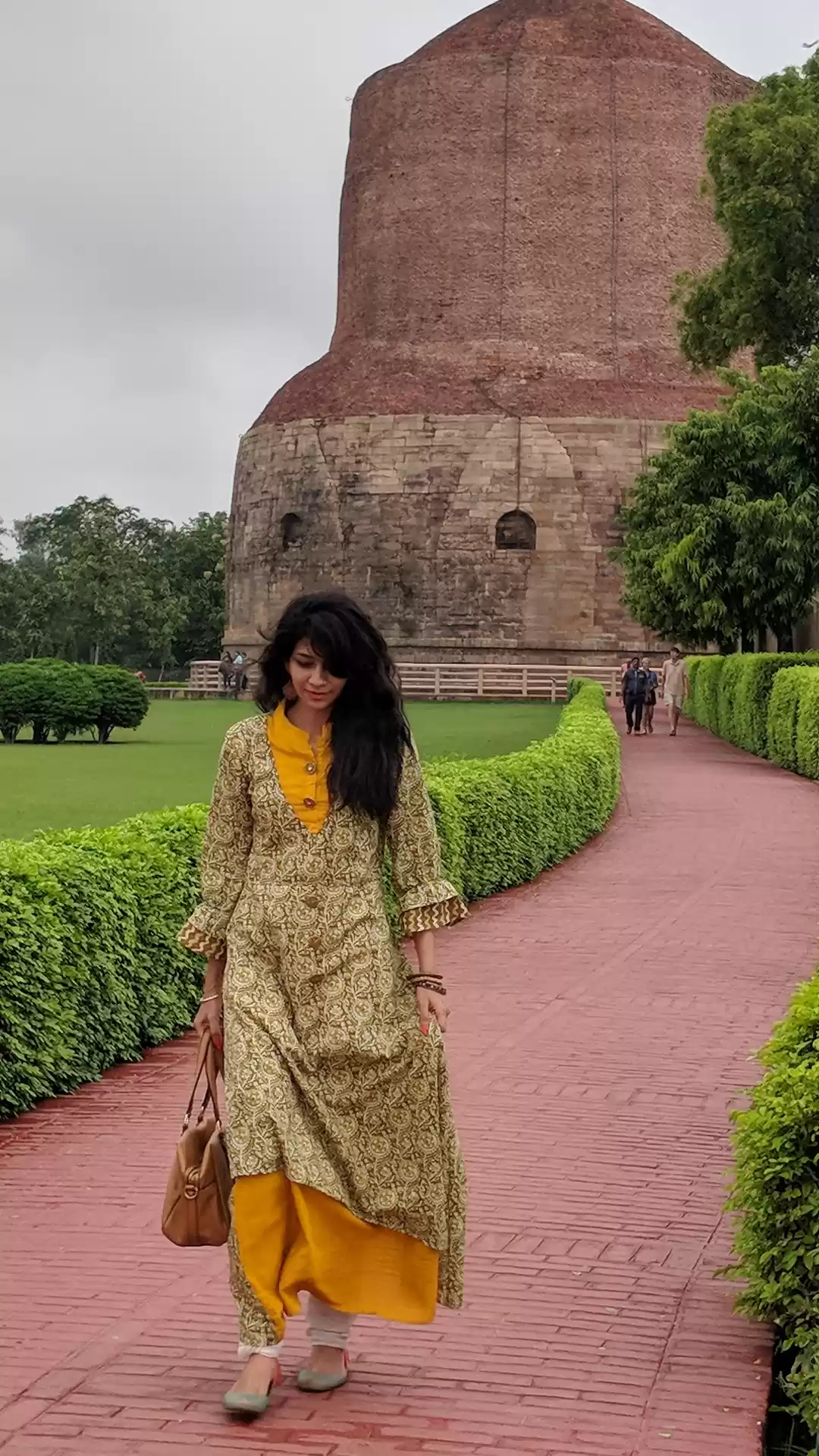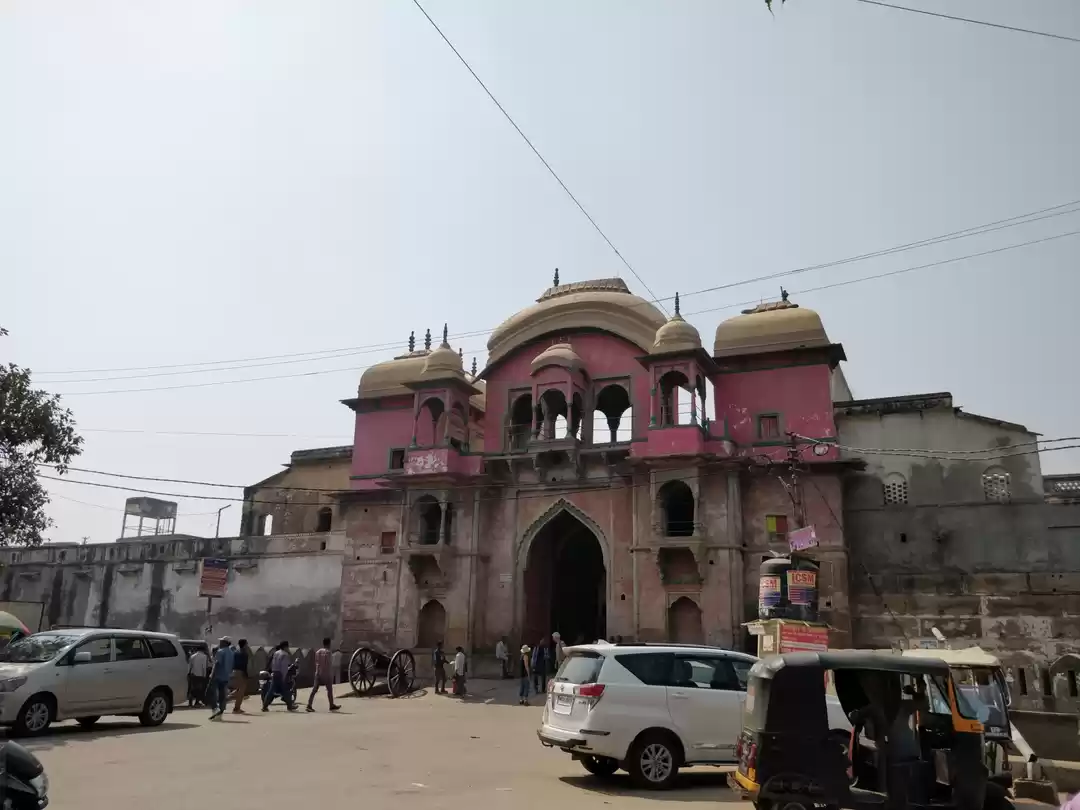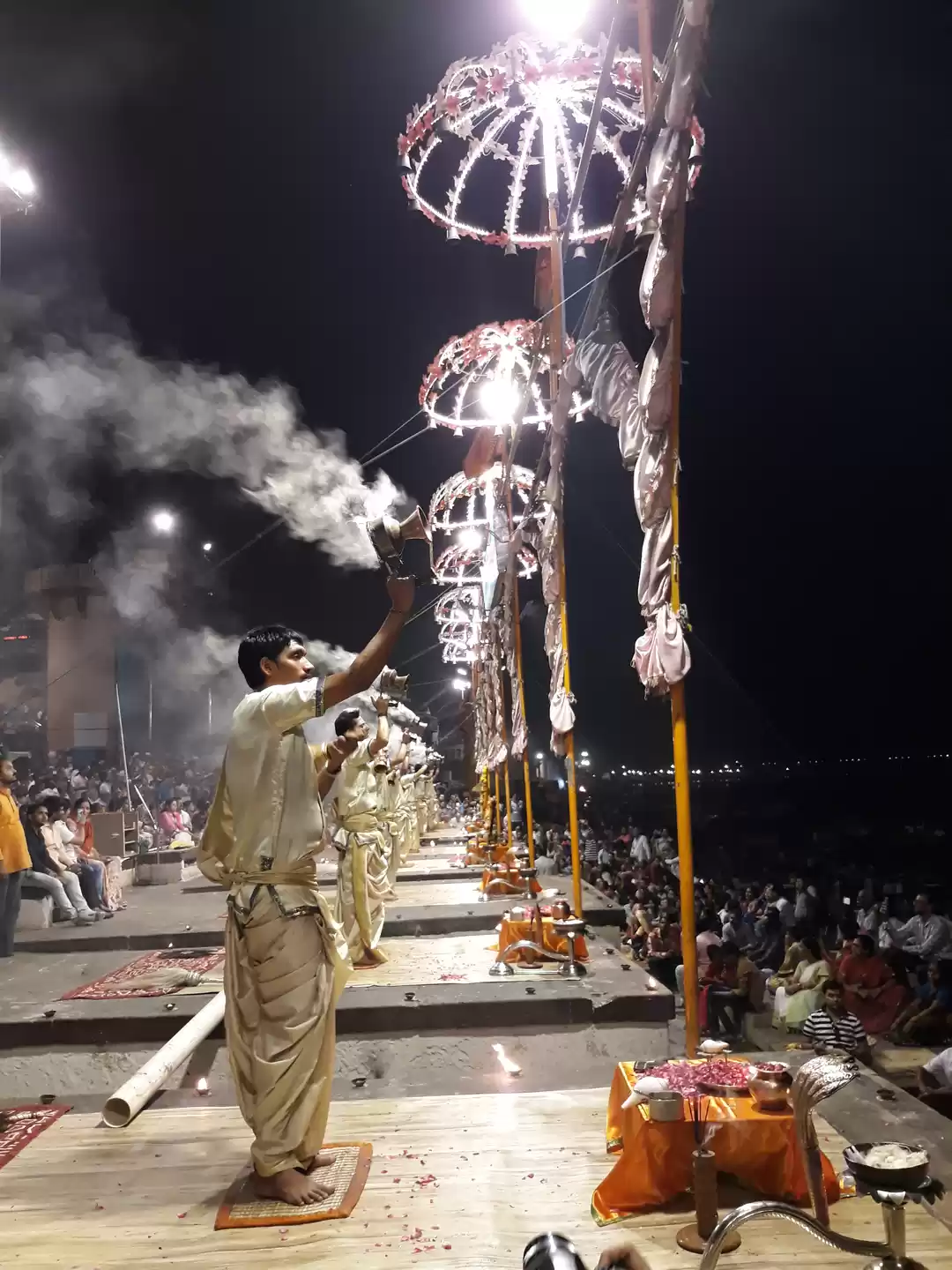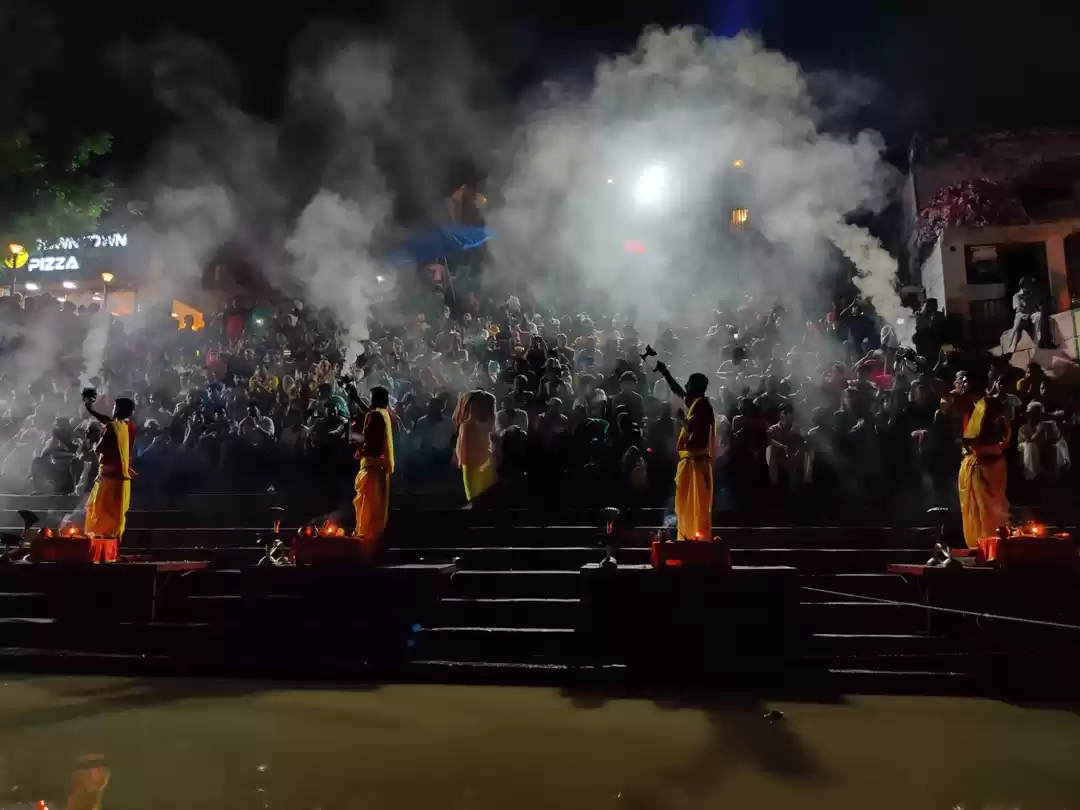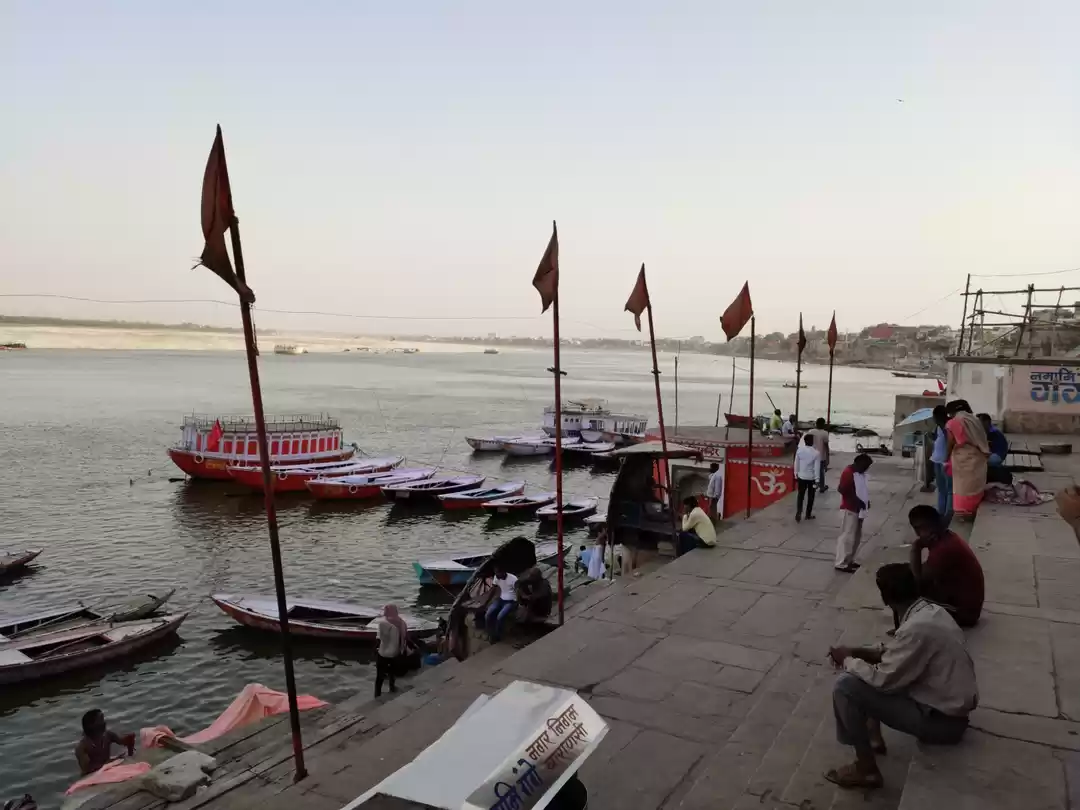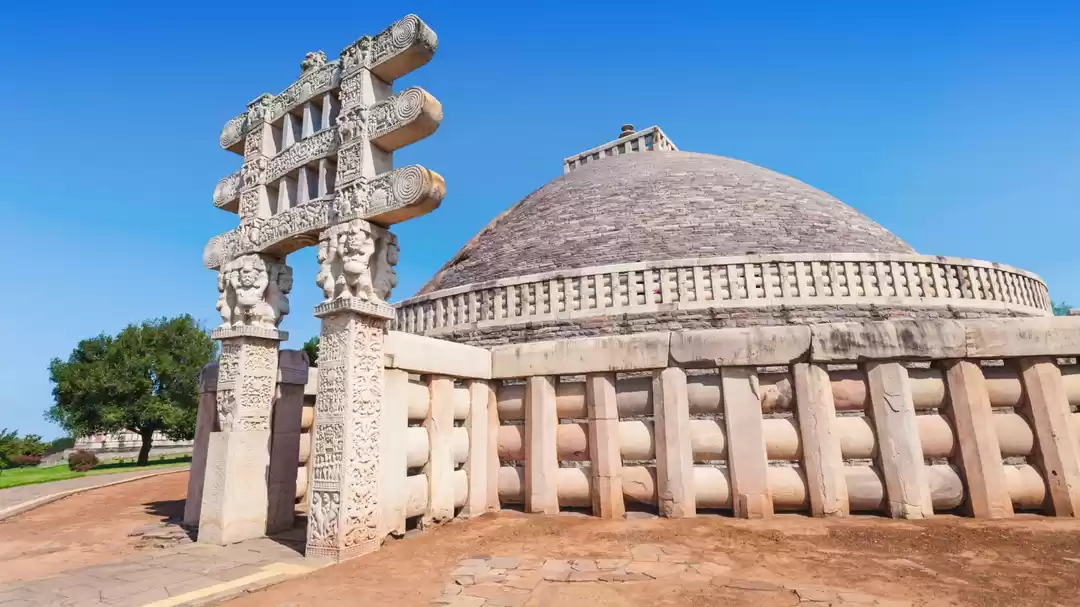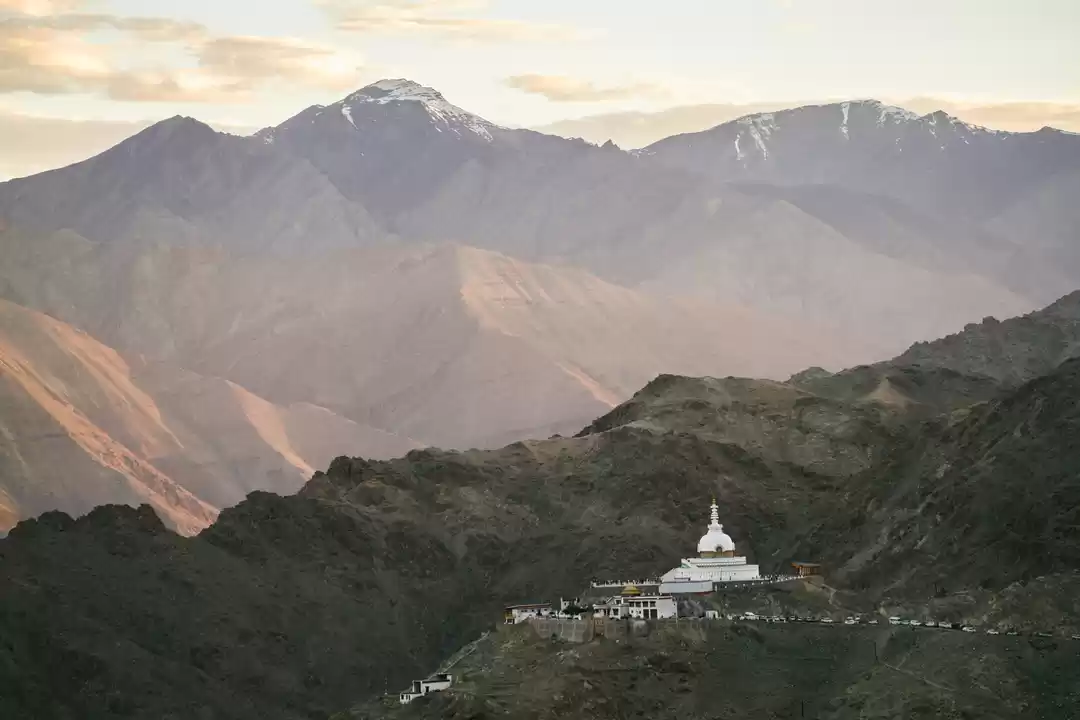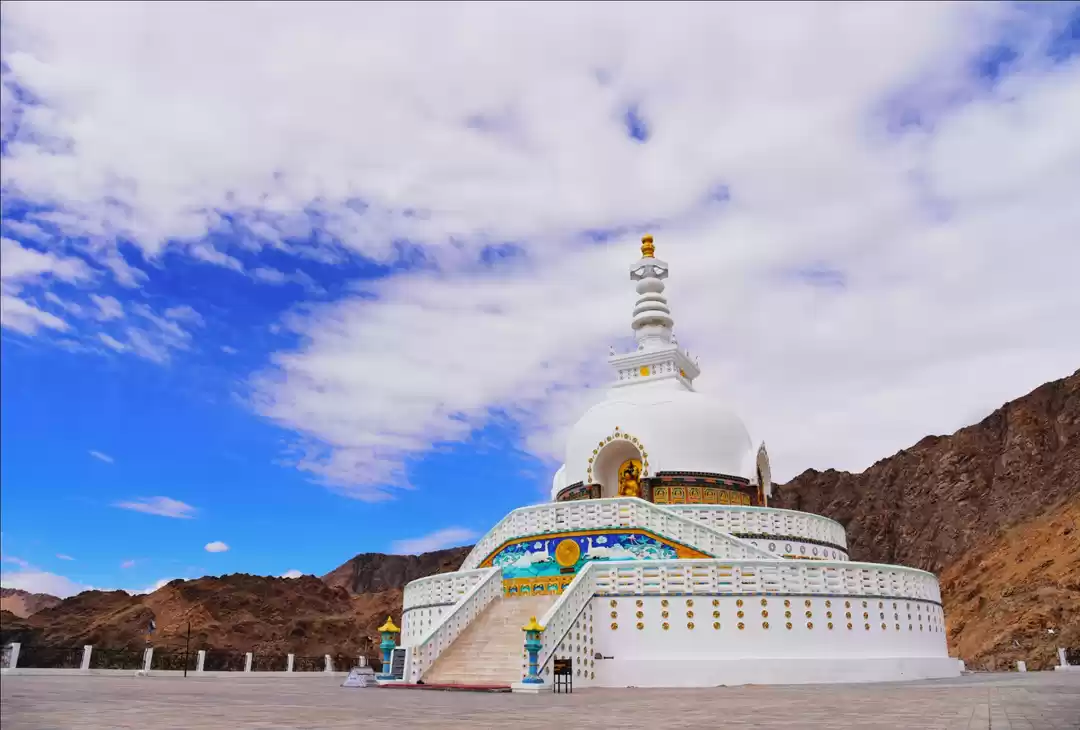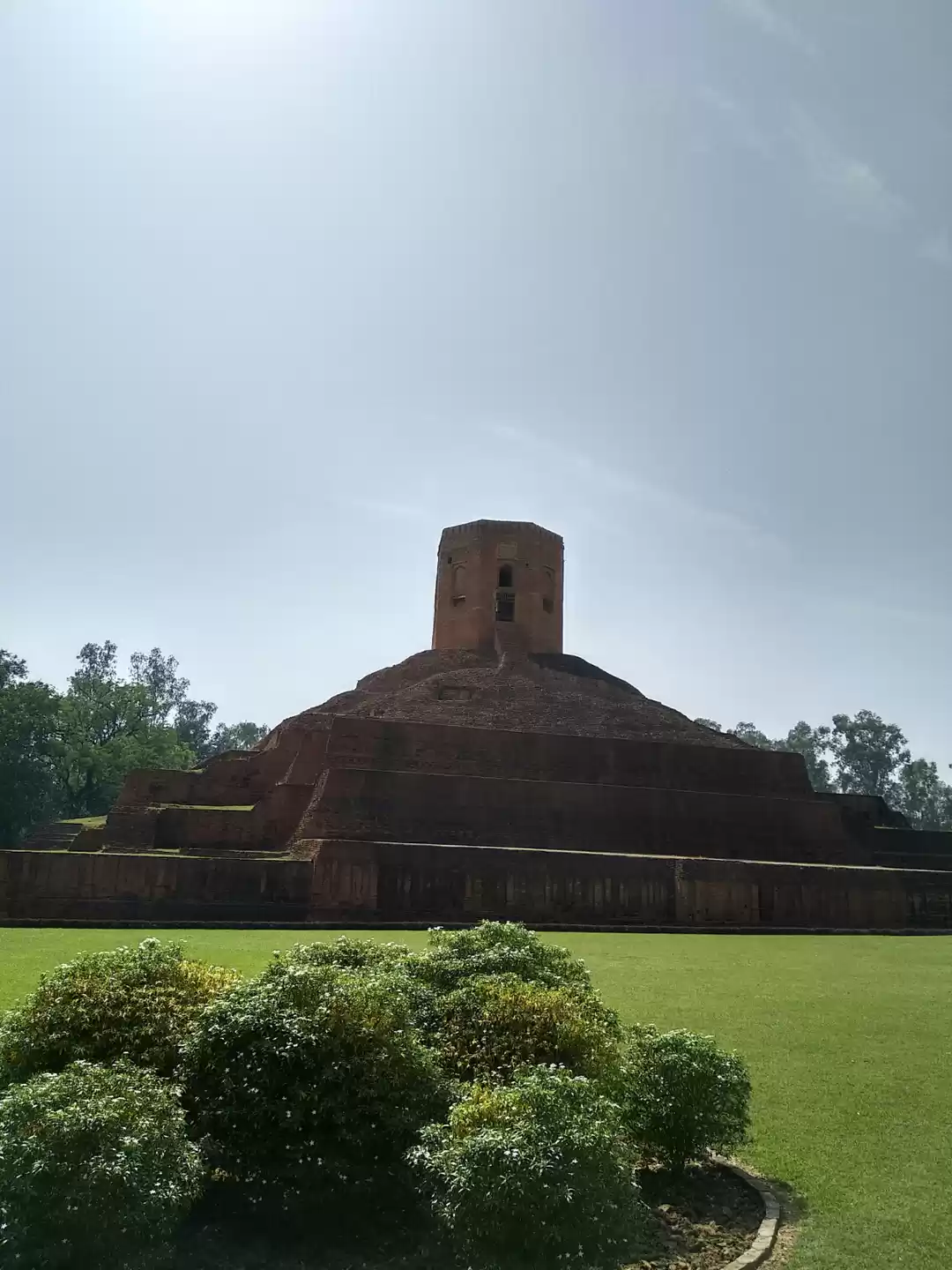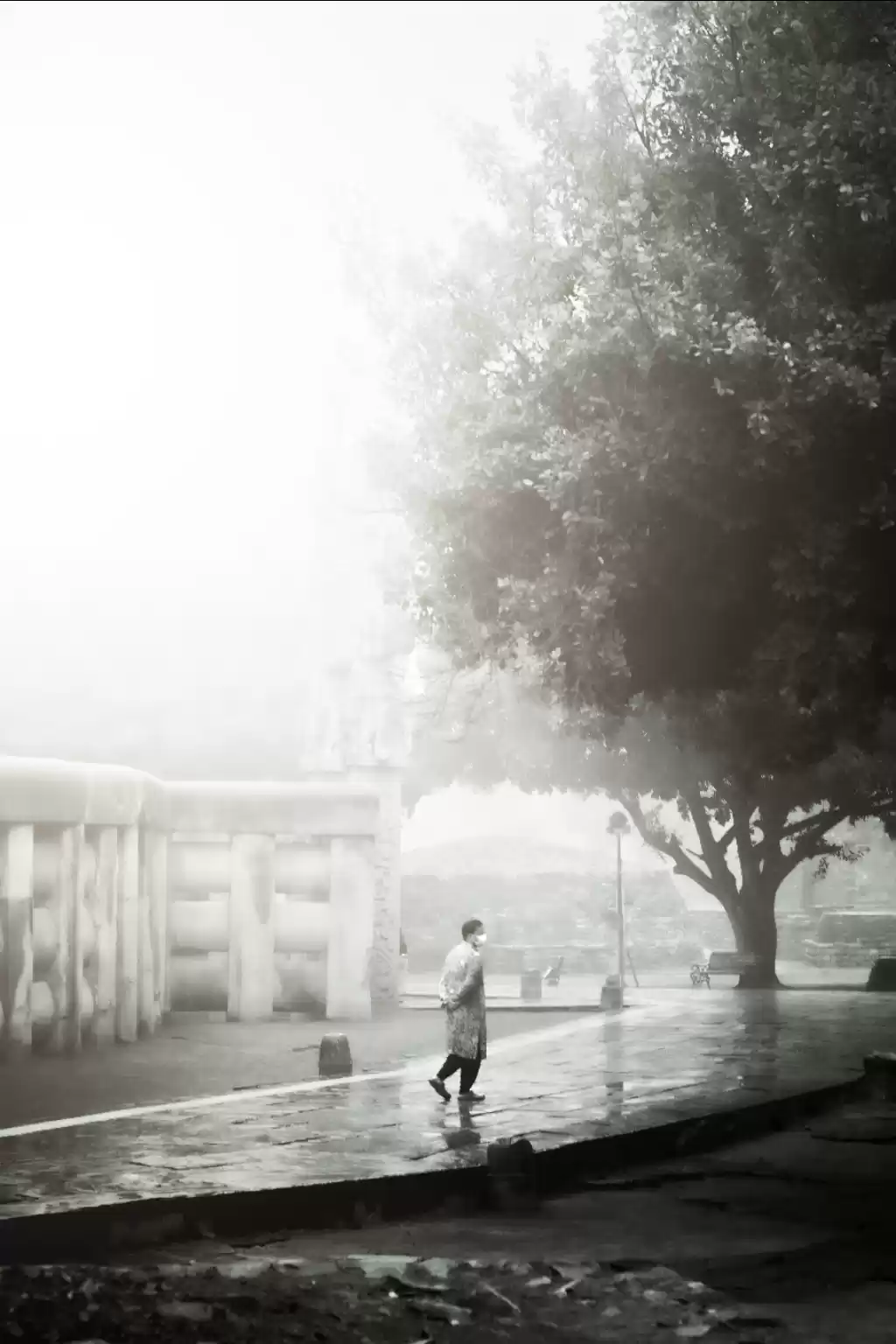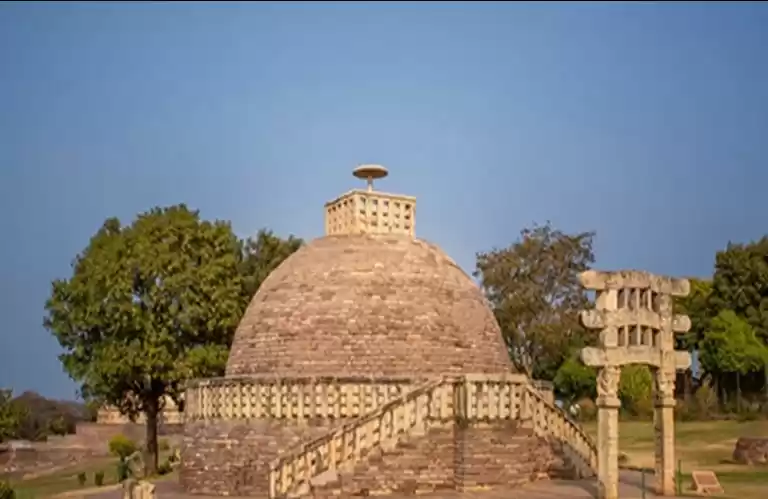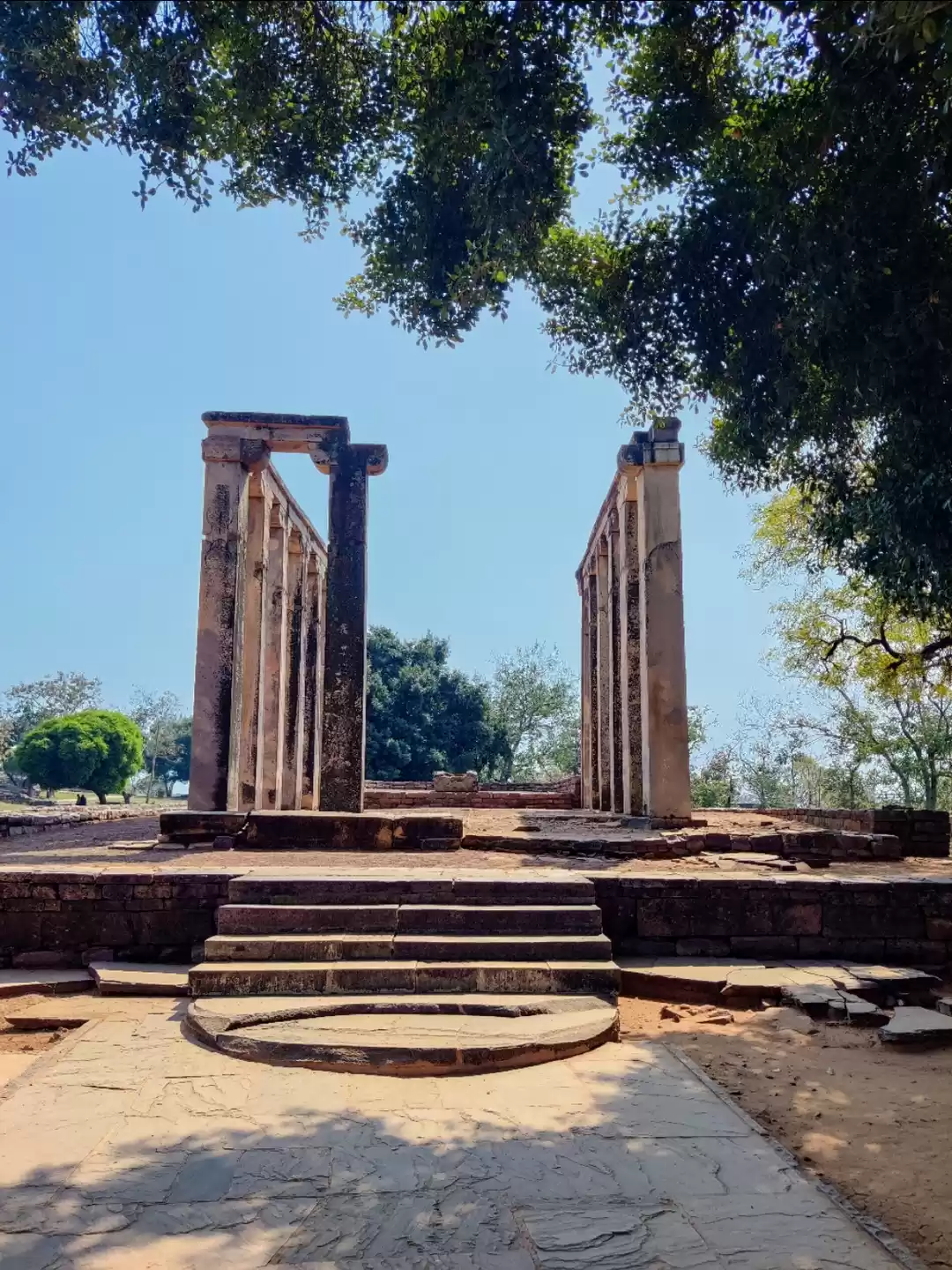Have you ever wondered where the Buddha gave his first sermon after attaining enlightenment? Have you ever wanted to see a magnificent and splendid structure that reflects the faith and devotion of his followers? Have you ever wished to experience the beauty and wisdom of Buddhism in India? If your answer is yes, then you should visit the Dhamek Stupa, a monument of history, heritage, and architecture, located in Sarnath, Uttar Pradesh.
The Dhamek Stupa: A Witness to the Birth of Buddhism
The Dhamek Stupa is believed to mark the spot where the Buddha delivered his first sermon to his five disciples after attaining enlightenment. This sermon, known as the Dhammacakkappavattana Sutta, laid the foundation of the Four Noble Truths and the Eightfold Path, the core teachings of Buddhism. The stupa is therefore considered to be one of the most sacred and revered sites for Buddhists all over the world.
The stupa was originally built by the Mauryan emperor Ashoka in the 3rd century BCE, as part of his mission to spread Buddhism across his empire. Ashoka erected a pillar near the stupa, which bore his edicts and inscriptions. The stupa was later enlarged and embellished by several subsequent rulers, such as the Kushans, the Guptas, and the Pala kings. The stupa reached its current size and shape in the 5th century CE, under the reign of Kumaragupta.
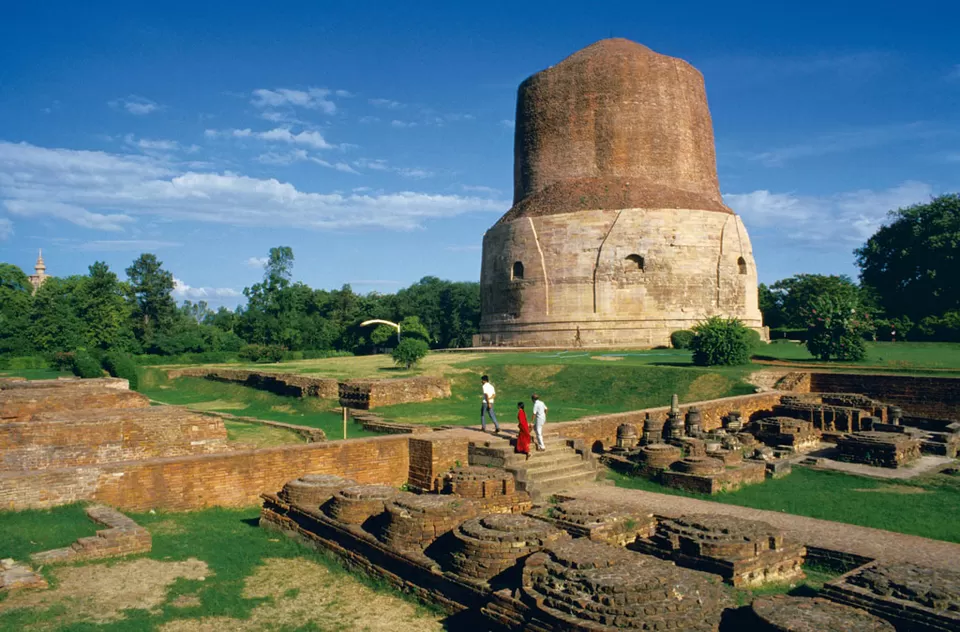
The stupa attracted many Chinese pilgrims and travelers, who recorded their observations and impressions of the stupa and its surroundings. The most famous of these were Faxian in the 5th century CE and Xuanzang in the 7th century CE, who described the stupa as a magnificent and splendid structure, adorned with gold, silver, and jewels. The stupa was also the site of several archaeological excavations, which unearthed many relics and artifacts, such as coins, sculptures, pottery, and inscriptions. Some of these are displayed in the nearby Sarnath Museum, which houses a rich collection of Buddhist art and culture.
The Dhamek Stupa: A Masterpiece of Brick and Stone
The Dhamek Stupa is a cylindrical structure, measuring about 43.6 meters in height and 28.3 meters in diameter. It is made of bricks and stones, arranged in alternating layers. The lower part of the stupa is covered with stone carvings, depicting floral motifs, geometric patterns, and human and animal figures. The upper part of the stupa is plain and smooth, with a circular terrace on top. The stupa also has a small opening on the eastern side, which is said to lead to a secret chamber inside the stupa, where some relics of the Buddha are believed to be stored.
The stupa has several inscriptions on its surface, which reveal the names and dates of the rulers and donors who contributed to the construction and renovation of the stupa. The most prominent inscription is that of Ashoka, which is written in Brahmi script and Prakrit language. It states that Ashoka built the stupa and the pillar to commemorate the Buddha’s sermon. The Ashoka pillar, which stood near the stupa, was a monolithic column, about 15 meters high, with a lion capital on top. The pillar was broken and damaged by invaders and treasure hunters, and only the base remains today. The lion capital, which is the emblem of India, is now preserved in the Sarnath Museum.
The Dhamek Stupa: A Destination for Pilgrims and Travelers
The Dhamek Stupa is located in Sarnath, a small town about 10 kilometers from Varanasi, the holy city of Hinduism. Sarnath is well-connected by road, rail, and air from major cities in India, such as Lucknow, Allahabad, and Patna. The stupa is open to visitors from sunrise to sunset, throughout the year. The best time to visit the stupa is during the winter months, from November to February, when the weather is pleasant and comfortable.
The Dhamek Stupa is not the only attraction in Sarnath. There are many other monuments and places of interest in the vicinity, such as the Dharmarajika Stupa, the Chaukhandi Stupa, the Mulagandha Kuti Vihar, the Sarnath Museum, and the Deer Park. These places offer a glimpse into the history, culture, and spirituality of Buddhism in India. Visitors can also enjoy the serene and peaceful atmosphere of Sarnath, and participate in the prayer and meditation sessions held by the monks and nuns in the various temples and monasteries.
Sarnath also offers a variety of accommodation options for visitors, ranging from budget hotels and guest houses to luxury resorts and heritage properties. Some of the popular places to stay in Sarnath are the Hotel Sarnath International, the Hotel Buddha International, the Hotel Taj Ganges, and the Hotel Clarks Varanasi. These places provide comfortable and convenient facilities and services for travelers, such as Wi-Fi, parking, restaurant, spa, etc.
Sarnath also has a vibrant and diverse cuisine, influenced by the local, regional, and international flavors. Visitors can savor the delicious and nutritious vegetarian dishes, such as kachori, samosa, chaat, dal, roti, sabzi, etc. They can also try the exotic and spicy non-vegetarian dishes, such as kebab, biryani, curry, etc. Sarnath also has a range of cafes and restaurants, where visitors can enjoy the local and international delicacies, such as Chinese, Thai, Italian, etc. Some of the popular places to eat in Sarnath are the Lemon Grass Restaurant, the Brown Bread Bakery, the Ming Garden, and the Varuna Restaurant.
Getting There
There are several ways to reach Sarnath from Varanasi, depending on your budget, time, and preference. Here are some of the options:
By car:
You can hire a taxi or a private car from Varanasi to Sarnath, which will take about 15 to 20 minutes, depending on the traffic. The distance is about 13 kilometers, and the fare may vary from 200 to 800 rupees, depending on the type of vehicle and the bargaining skills. You can book a car online or through a travel agency, or you can find one at the airport, railway station, or bus stand. This is the most comfortable and convenient option, especially if you are traveling with luggage or family.
By train:
You can take a local train from Varanasi City railway station to Sarnath railway station, which will take about 10 minutes. The distance is about 8 kilometers, and the ticket price is 80 to 550 rupees, depending on the class and availability. The trains run every 3 hours, and you can check the schedule and availability online or at the station. This is the cheapest and fastest option, but you may have to deal with crowds and delays.
By bus:
You can take a public bus from Varanasi Junction railway station to Sarnath, which will take about 30 to 45 minutes, depending on the traffic. The distance is about 10 kilometers, and the ticket price is 10 to 20 rupees, depending on the type of bus. The buses run frequently, and you can find them at the bus stand or on the road. This is the most economical and eco-friendly option, but you may have to face noise, pollution, and discomfort.
The Dhamek Stupa is a monument of history, heritage, and architecture, that showcases the origin and development of Buddhism in India. It is a place where the Buddha delivered his first sermon, and where his followers built and preserved a magnificent and splendid structure, that reflects their faith and devotion. It is a place where pilgrims and travelers can experience the beauty and wisdom of Buddhism, and where they can find peace and enlightenment.
If you are interested in learning more about the Dhamek Stupa and its surroundings, you can visit the official website of the UP Tourism, or you can book a guided tour with a reputable travel agency. You can also watch this video that gives a virtual tour of the stupa and its nearby attractions.
The Dhamek Stupa is a must-see for anyone who wants to explore the rich and diverse heritage of India, and who wants to discover the essence and spirit of Buddhism.


